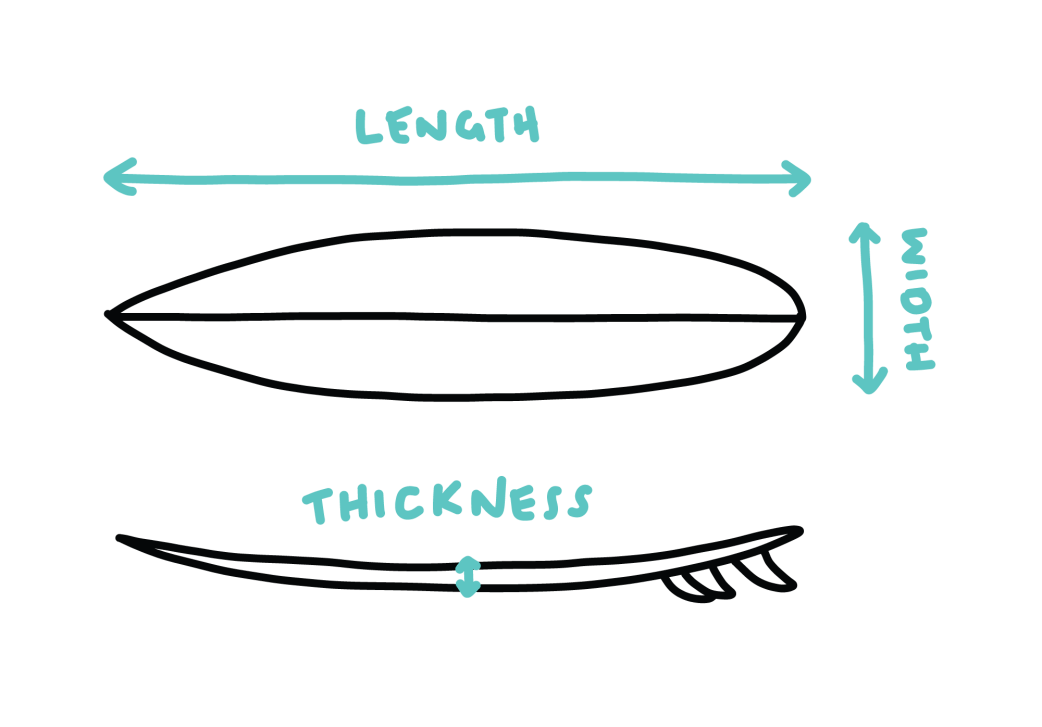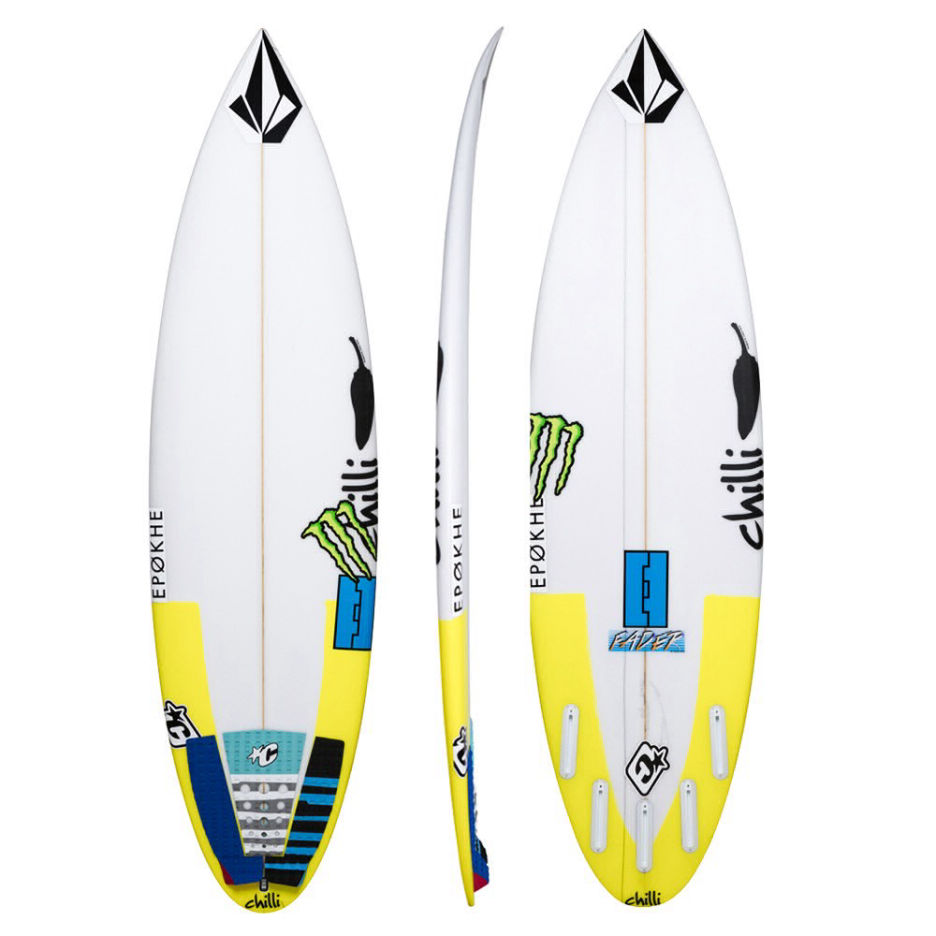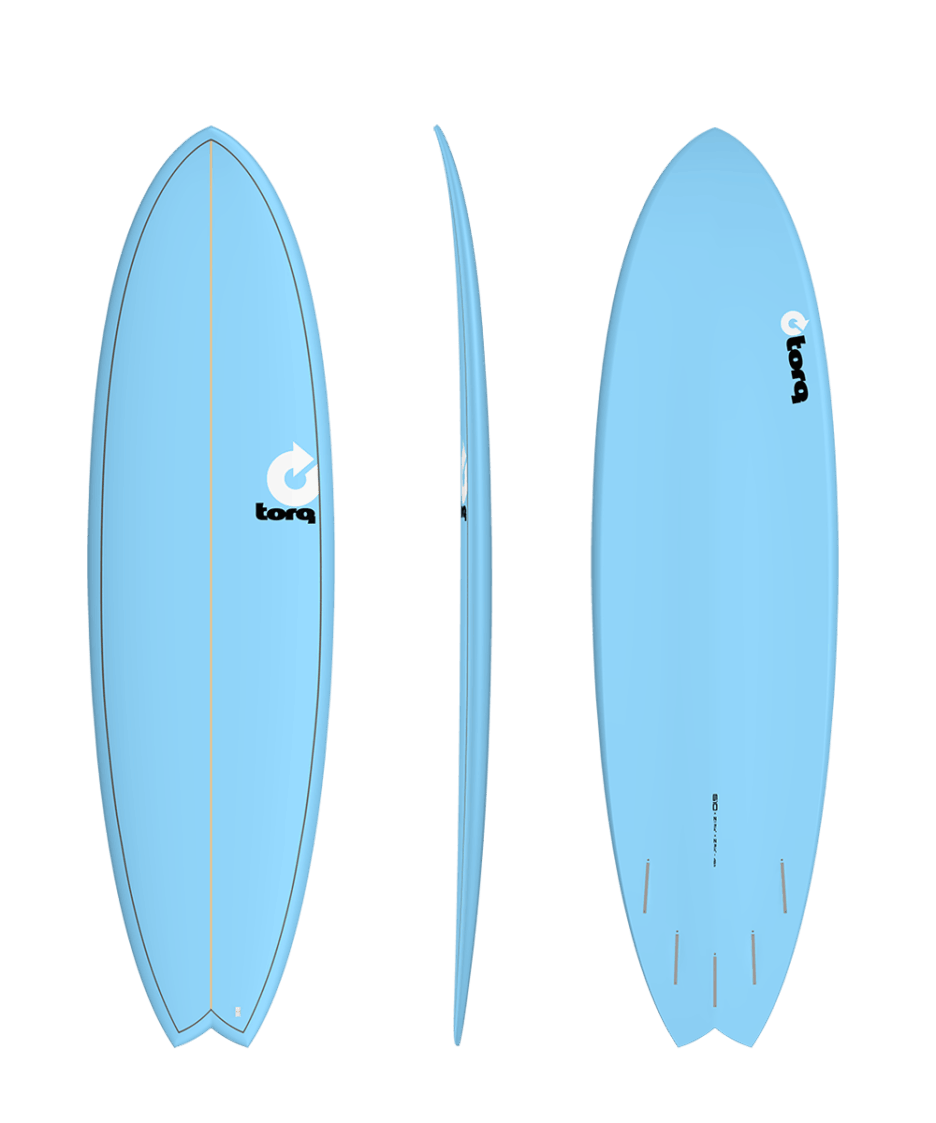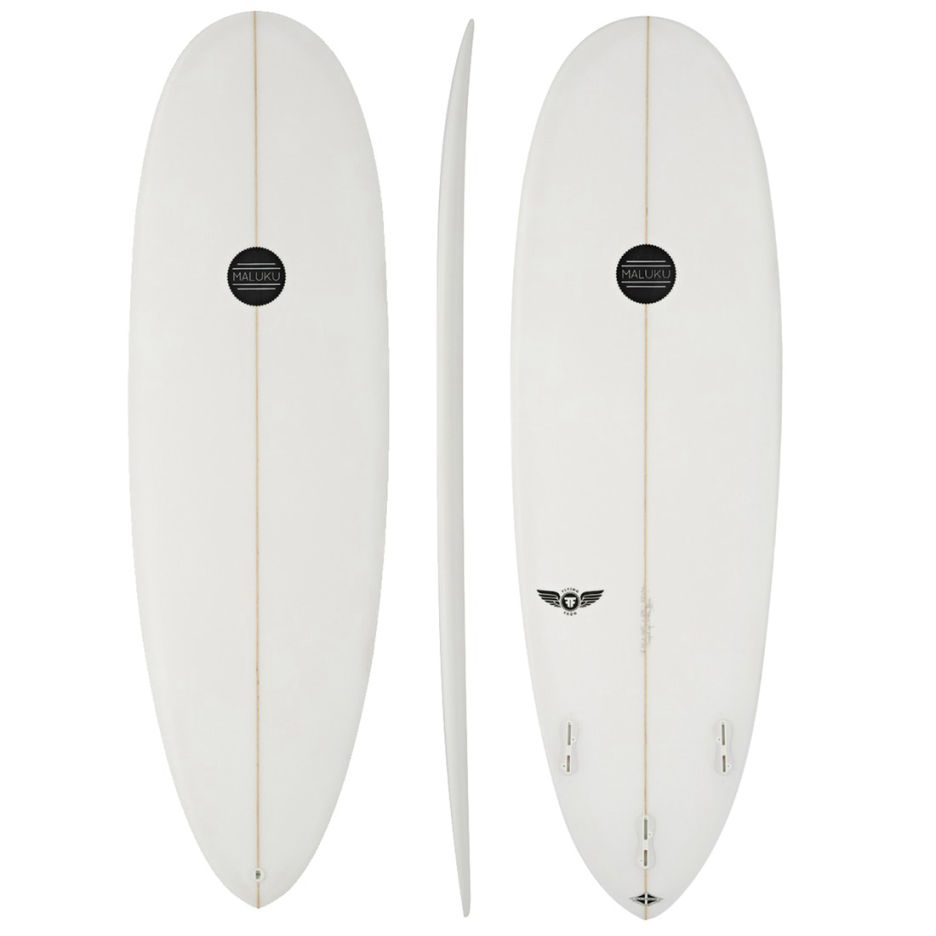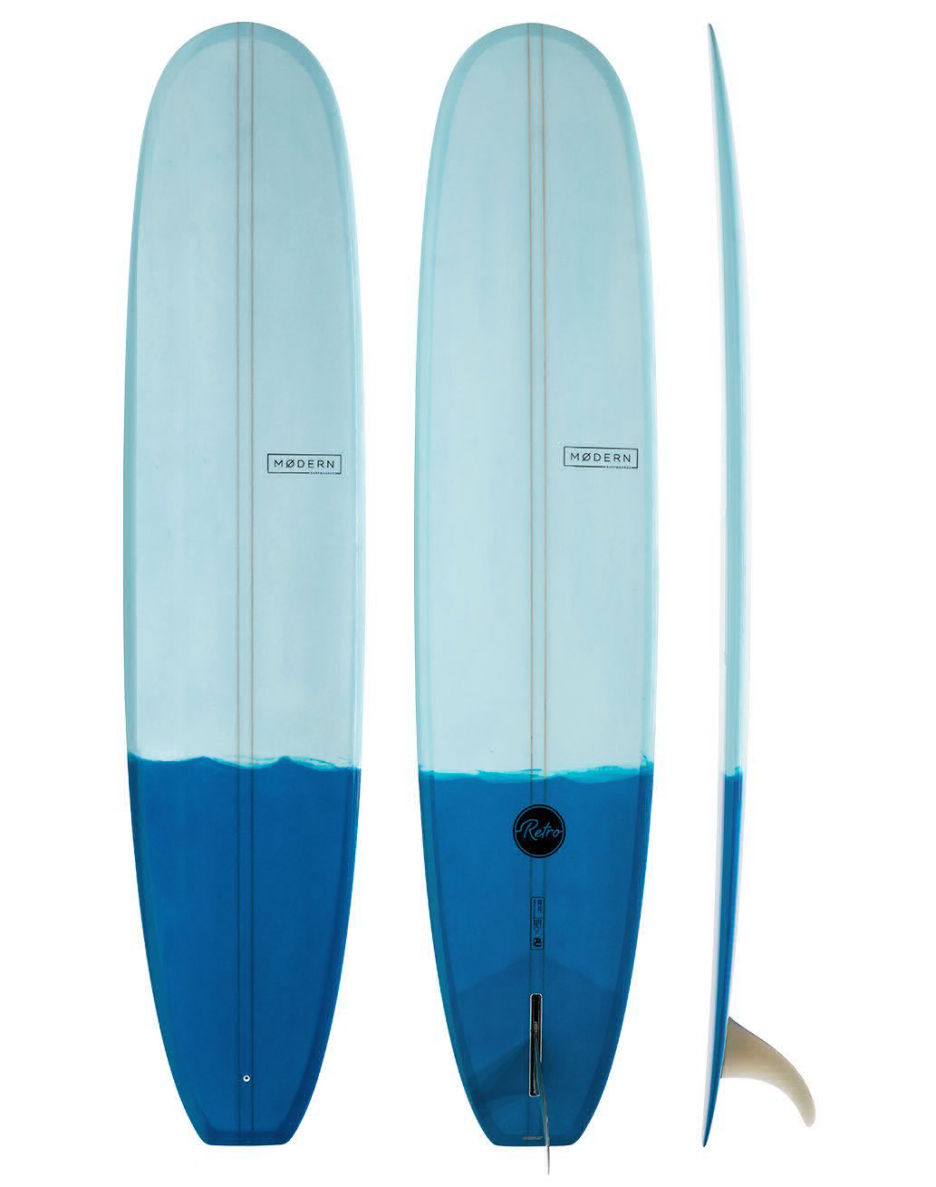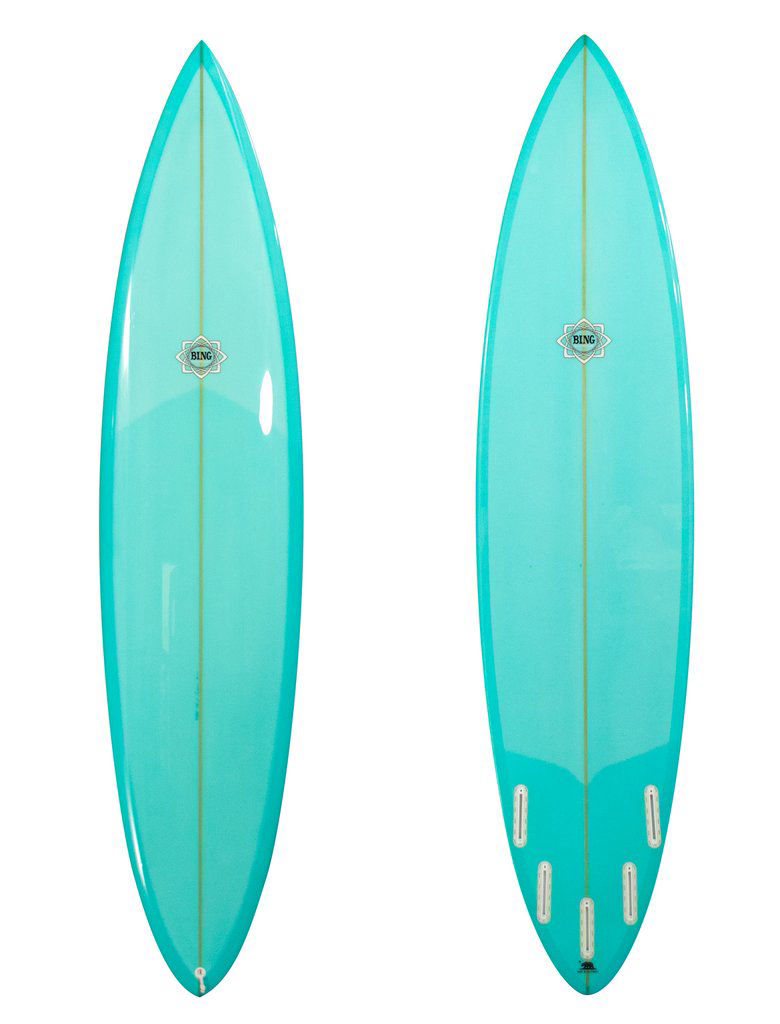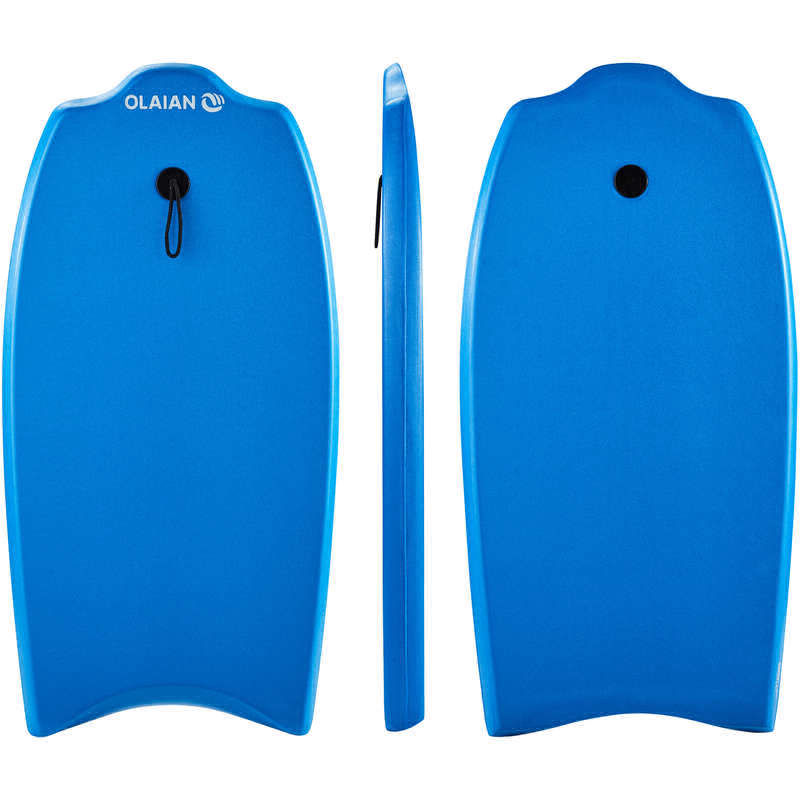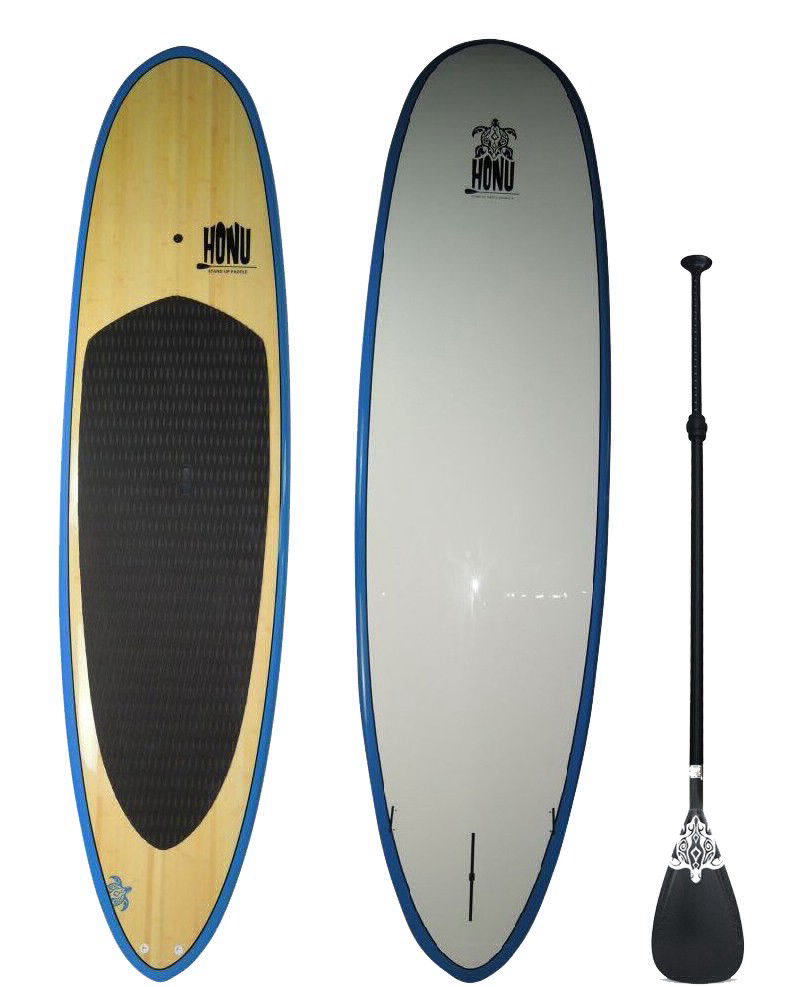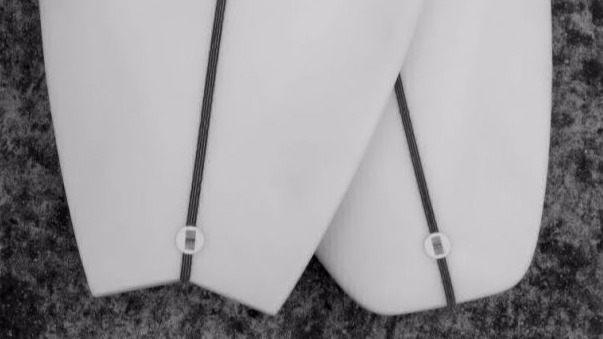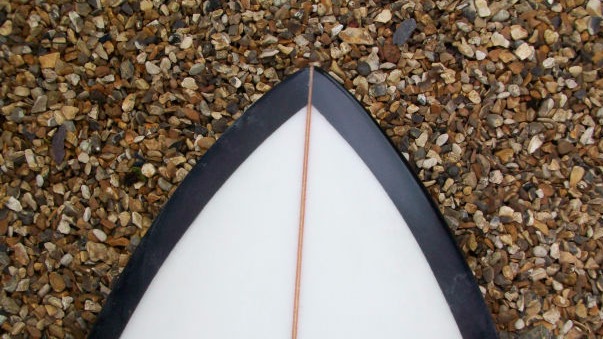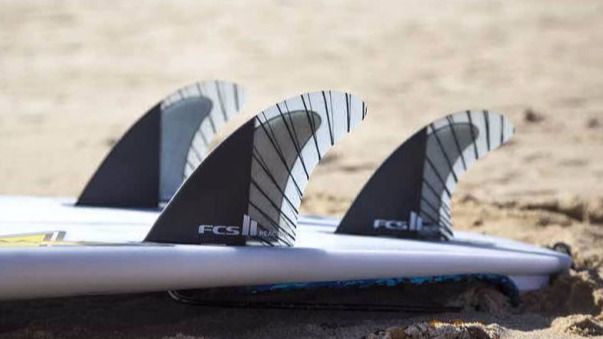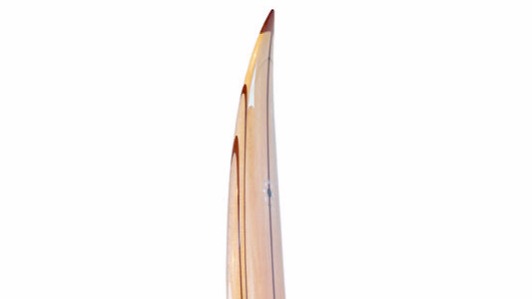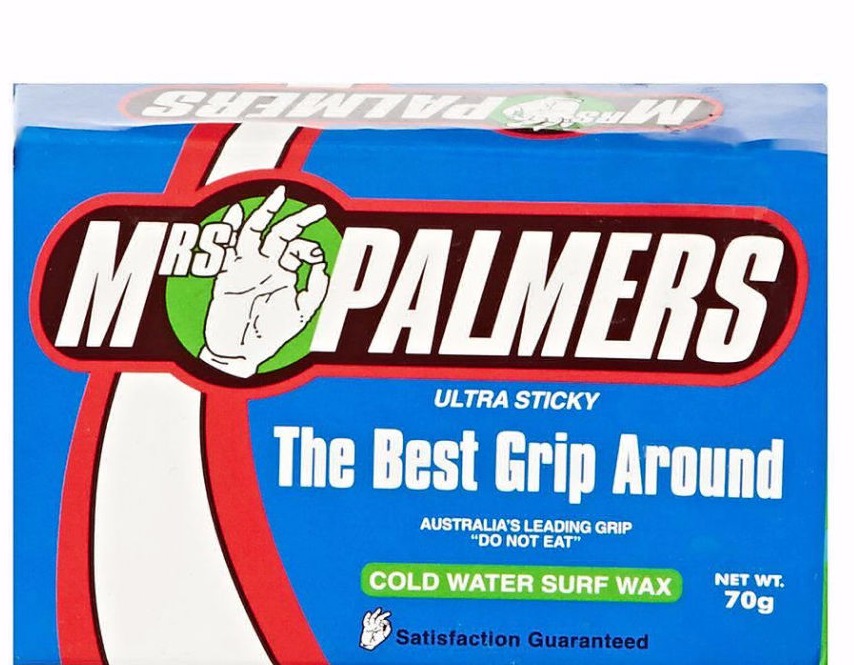The length, width, and depth of a surfboard greatly affect its or the surfer’s performance in the water.
The length of the surfboard is very important. The longer the board the easier it is to paddle and to stand up on as it feels more stable under the surfer’s feet. Due to this extra stability, beginner’s generally started with a longer board. But that isn’t to say more advanced surfers always progress onto a shorter board. Longboard surfing practically has its own sub-culture, with its own professional surf scene, and is often associated with ‘soul surfing’. Longer boards are less maneuverable due to their length. Surfers who want to perform faster, more aggressive and aerial maneuvers tend to ride shorter surfboards.
The width of the surfboard affects its buoyancy in the water and how stable the surfboard feels under feet. As with the length, the wider the board the more stability the surfboard will have.
The depth or thickness of the surfboard determines how well it floats. The greater the floatation, the smoother the ride is and the easier it is to paddle. The heavier the surfer, the thicker the surfboard should ideally be.
